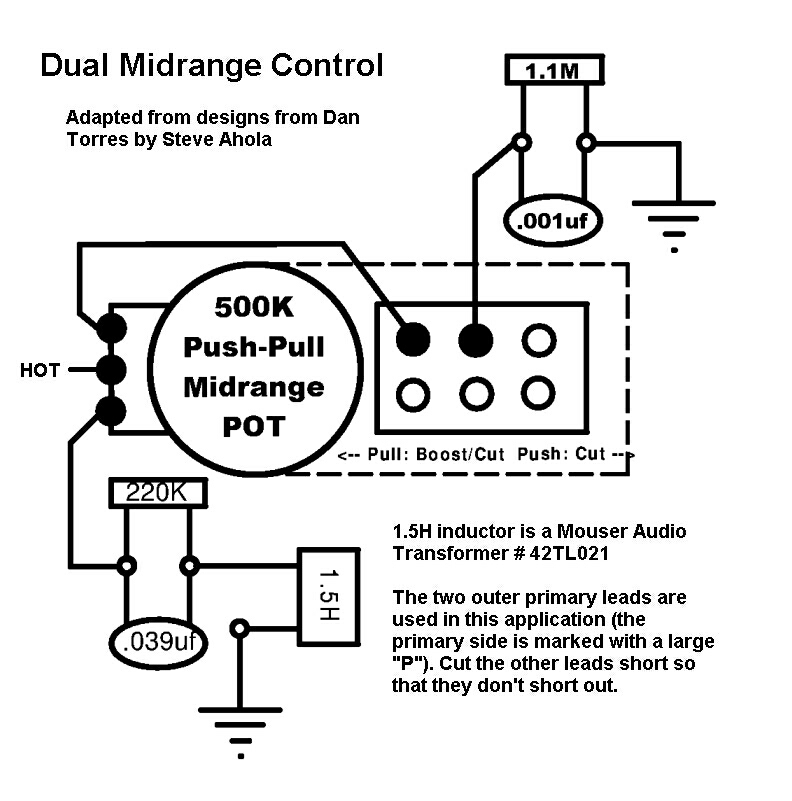In my guitars I used the Dan Torres mid-boost/cut control based on the same Mouser audio transformer that Craig Anderton used in his book on projects for the electric guitar:
Mouser Audio Transformer #42TL021
Outer P(rimary) terminals 1.5H
I removed the boost portion (on top of drawing) and wired the midcut to a pot in my 1978 LP 25-50 for a really slick control that cleaned up the sound. (I need to reverse engineer that mod to see what value resistor and cap I used.)
Wired as mid-boost/cut in my strats there was considerable signal loss in supposedly neutral middle position.

Steve A.
PDF of circuit:
dual_mid.pdf
Mouser Audio Transformer #42TL021
Outer P(rimary) terminals 1.5H
I removed the boost portion (on top of drawing) and wired the midcut to a pot in my 1978 LP 25-50 for a really slick control that cleaned up the sound. (I need to reverse engineer that mod to see what value resistor and cap I used.)
Wired as mid-boost/cut in my strats there was considerable signal loss in supposedly neutral middle position.
Steve A.
PDF of circuit:
dual_mid.pdf
 , has a silver "Eric Clapton" Strat, with built in "mid boost" ... killer sound, both classic Strat "qwack" and powerful Humbucker style fat mids with gain and power to sparte ... and nobodyīs the wiser
, has a silver "Eric Clapton" Strat, with built in "mid boost" ... killer sound, both classic Strat "qwack" and powerful Humbucker style fat mids with gain and power to sparte ... and nobodyīs the wiser 


Comment